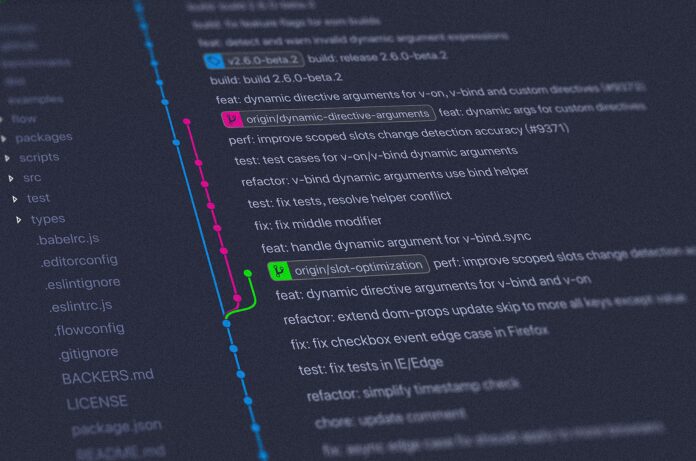Introduction:
In today’s highly dynamic and complex IT environments, observability has become a critical aspect of ensuring the reliability, performance, and security of modern software applications. Observability involves collecting, analyzing, and visualizing data from various sources to gain insights into the behavior and performance of systems, applications, and services. One popular observability platform used by many organizations is DataDog, which provides a wide range of tools and services for monitoring, troubleshooting, and optimizing complex distributed systems. At the heart of DataDog’s observability platform is its API, which allows developers to programmatically interact with DataDog’s features and functionalities. In this article, we will delve into the details of the DataDog API, exploring its functionality, use cases, and benefits.
DataDog API Overview:
The DataDog API is a RESTful API that provides a comprehensive set of endpoints for interacting with DataDog’s observability platform. The API allows developers to programmatically access and manipulate various aspects of DataDog, including metrics, traces, logs, dashboards, alerts, and more. With the DataDog API, developers can integrate DataDog’s observability capabilities into their own applications, automate tasks, retrieve data for analysis, and create custom workflows tailored to their specific use cases.
Functionality of the DataDog API:
The DataDog API provides a rich set of functionalities that cover a wide range of observability use cases. Some of the key functionalities of the DataDog API include:
Metrics: The DataDog API allows developers to send custom metrics data to DataDog for monitoring and visualization. Developers can use the API to send metrics data in various formats, such as time series data, histograms, or events. Metrics data can be used to track the performance, availability, and usage of various resources, such as servers, containers, databases, applications, and more. Developers can also use the API to query and retrieve metrics data for analysis or visualization.
Traces: The DataDog API provides functionality for collecting and analyzing distributed traces data from applications. Traces are used to capture the interactions between different components of distributed systems, such as microservices, APIs, databases, and external services. Developers can use the API to send traces data to DataDog, query traces data for analysis, and visualize trace data using DataDog’s built-in trace visualizations.
Logs: The DataDog API enables developers to send logs data to DataDog for centralizing, aggregating, and analyzing log data from various sources. Logs are used to capture important events, errors, and messages from applications, infrastructure, and services. Developers can use the API to send logs data in various formats, such as JSON, syslog, or custom formats. Logs data can be queried, filtered, and analyzed using DataDog’s log management features, such as log analytics, alerting, and dashboards.
Dashboards: The DataDog API allows developers to create, modify, and retrieve dashboards for visualizing observability data. Dashboards are used to create custom visualizations of metrics, traces, logs, and other data in DataDog. Developers can use the API to create dashboards with various types of charts, graphs, and widgets, configure dashboard settings, and share dashboards with other users. Dashboards can be used to monitor the health, performance, and behavior of applications, systems, and services in real-time.
Alerts: The DataDog API provides functionality for creating, modifying, and managing alerts for monitoring and alerting on observability data. Alerts are used to detect and notify on anomalous behavior, errors, or events in applications, systems, and services. Developers can use the API to create alert rules, specify conditions for triggering alerts, configure alert actions, and manage alert notifications. Alerts can be used to proactively identify and resolve issues in real-time, ensuring the reliability and availability of critical systems and applications.
Integration: The DataDog API allows developers to integrate DataDog’s observability capabilities with other tools, services, and platforms. The API provides integrations with popular technologies, such as AWS, Azure, GCP, Kubernetes, Docker, Elasticsearch, MySQL, and many more. Developers can use the API to configure and manage integrations, collect data from integrated sources, and correlate data from multiple sources for holistic observability.
Use Cases of the DataDog API:
The DataDog API can be used in a wide range of observability use cases across various industries and sectors. Some of the common use cases of the DataDog API include:
Monitoring and troubleshooting of distributed systems: The DataDog API allows developers to monitor the performance, availability, and behavior of distributed systems, such as microservices architectures, containerized applications, cloud-based applications, and hybrid environments. Developers can use the API to collect metrics, traces, logs, and other observability data from various sources, analyze the data for anomalies or errors, and troubleshoot issues in real-time.
Custom alerting and notifications: The DataDog API enables developers to create custom alert rules and notifications based on their specific monitoring requirements. Developers can use the API to configure alert conditions, set thresholds, and specify actions, such as sending notifications via email, Slack, PagerDuty, or other channels. Custom alerting and notifications help organizations to proactively identify and resolve issues before they impact the availability or performance of critical systems.
Custom dashboards and visualizations: The DataDog API allows developers to create custom dashboards and visualizations tailored to their specific monitoring needs. Developers can use the API to create dashboards with various types of charts, graphs, and widgets, configure dashboard settings, and share dashboards with other users. Custom dashboards and visualizations provide organizations with a unified view of their observability data, helping them to gain insights into the behavior and performance of applications, systems, and services.
Automating observability workflows: The DataDog API enables developers to automate observability workflows, such as data collection, analysis, and visualization. Developers can use the API to programmatically interact with DataDog’s features and functionalities, automate data ingestion from various sources, trigger actions based on specific events or conditions, and create custom workflows tailored to their specific use cases. Automation of observability workflows helps organizations to streamline their monitoring and troubleshooting processes, reduce manual efforts, and improve operational efficiency.
Integration with other tools and services: The DataDog API provides integrations with popular technologies, such as AWS, Azure, GCP, Kubernetes, Docker, Elasticsearch, MySQL, and many more. Developers can use the API to configure and manage integrations, collect data from integrated sources, and correlate data from multiple sources for holistic observability. Integration with other tools and services helps organizations to consolidate their observability data, gain a unified view of their IT ecosystem, and improve their ability to detect and resolve issues across different layers of the technology stack.
Benefits of Using the DataDog API:
The DataDog API offers several benefits to organizations that are looking to enhance their observability capabilities. Some of the key benefits of using the DataDog API include:
Scalability: The DataDog API allows organizations to scale their observability capabilities based on their needs. Developers can use the API to collect, analyze, and visualize large volumes of data from various sources, such as applications, systems, services, and cloud platforms. The API supports high throughput, low-latency data ingestion, and processing, making it suitable for monitoring and troubleshooting complex and large-scale distributed systems.
Flexibility: The DataDog API provides flexibility in terms of data collection, analysis, and visualization. Developers can use the API to configure custom data collection methods, create custom alert rules and notifications, and design custom dashboards and visualizations tailored to their specific monitoring requirements. This flexibility allows organizations to adapt their observability workflows to their unique use cases, ensuring that they can monitor and troubleshoot their systems in a way that aligns with their business needs and objectives.
Automation: The DataDog API enables automation of observability workflows, allowing organizations to streamline their monitoring and troubleshooting processes. Developers can use the API to programmatically interact with DataDog’s features and functionalities, automate data collection, analysis, and visualization, trigger actions based on specific events or conditions, and create custom workflows. Automation of observability workflows helps organizations to reduce manual efforts, improve operational efficiency, and proactively detect and resolve issues in real-time.
Integrations: The DataDog API provides integrations with popular technologies, such as AWS, Azure, GCP, Kubernetes, Docker, Elasticsearch, MySQL, and many more. This allows organizations to consolidate their observability data from various sources, gain a unified view of their IT ecosystem, and correlate data from different layers of the technology stack. Integrations with other tools and services enable organizations to leverage their existing investments in technology and extend their observability capabilities across their entire IT infrastructure.
Real-time Monitoring: The DataDog API allows organizations to monitor their systems and applications in real-time, enabling proactive issue detection and resolution. Developers can use the API to configure custom alert rules and notifications, set thresholds, and specify actions based on specific events or conditions. Real-time monitoring helps organizations to identify and resolve issues before they impact the availability or performance of critical systems, minimizing downtime and ensuring the reliability and availability of applications and services.
Visualization and Insights: The DataDog API provides powerful visualization capabilities, allowing organizations to gain insights into the behavior and performance of their systems and applications. Developers can use the API to create custom dashboards with various types of charts, graphs, and widgets, configure dashboard settings, and share dashboards with other users. Visualization and insights help organizations to understand the health and performance of their systems, identify patterns and trends, and make data-driven decisions to optimize their IT operations.
Conclusion:
In conclusion, the DataDog API is a powerful tool for enhancing observability capabilities in modern IT environments. It provides organizations with the ability to collect, analyze, and visualize observability data from various sources, configure custom alert rules and notifications, automate observability workflows, integrate with other tools and services, and monitor systems in real-time. The flexibility, scalability, automation, and integrations offered by the DataDog API enable organizations to gain insights into the behavior and performance of their systems and applications, proactively detect and resolve issues, and ensure the reliability and availability of critical systems. With its comprehensive set of features and functionalities, the DataDog API is a valuable tool for organizations looking to optimize their observability practices and achieve operational excellence in their IT operations.























